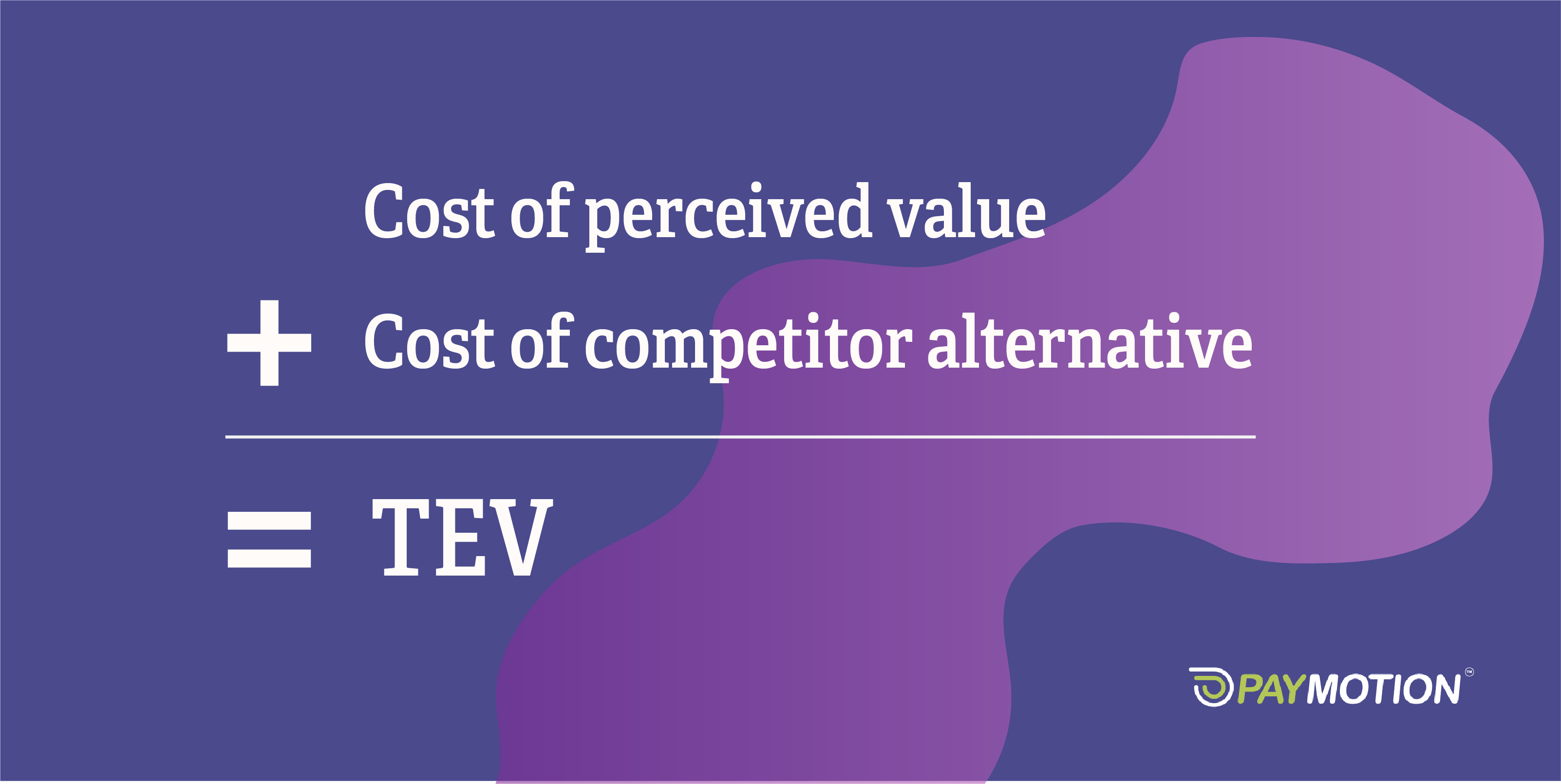For companies looking to gain strong insight into their customer needs and spend time understanding their perceptions of your products, the value-based pricing model will likely take you far.
A value-based pricing strategy involves setting a price on your product that’s primarily based upon determining what your potential customers are willing to pay for it. Compared to other pricing methods like cost-plus pricing or penetration pricing which could end up having your business either losing business or leaving money on the table because of inefficiently set prices, taking a value-based pricing approach is designed to be much more aligned with consumer preferences.
To accurately determine this, you must first understand True Economic Value (TEV), which is a simple calculation:

Let’s say that you’re a software company that provides an anti-virus solution. In addition to the ability to scan and clean desktops and laptops, your solution also includes scanning and cleaning for smartphones and tablets. Your closest competitor - which does not include the smartphone and tablet feature – offers its product for an annual subscription rate of $90. If the customer values the smartphone and tablet feature at an additional $30 a year, the TEV would be $90 + $30 = $120.
While the above calculation is a simplified way to understand the value-based pricing approach, there are some key areas that must be considered when implementing the model. Otherwise, you run the risk of diluting your chances of success.
Focus on Specific Segments: As this model is based upon customer perception, it’s important you understand that each customer persona that’s applicable to your business might perceive the value differently. Therefore, it’s crucial that you take the time to focus on one segment at a time. If you have multiple segments, you’ll need to determine a value-based price for each one.
Similar Competitor: Having a similar competitor that you can use to plug into the TEV equation above is paramount for this pricing strategy to work.
Product Distinction: In addition to knowing what your similar competitor can offer, you almost must clearly identify what makes your product unique. This is what you’ll be focusing on your customer perception around – not the product similarities.
Customer Analysis: As a key part of this pricing strategy involves understanding your customer needs, you will need to allocate time and resources to analyzing what those needs are. This can be done in the form of conjoint analysis, like surveys and interviews.
As we mentioned earlier, value-based pricing can be advantageous when compared to other pricing methods. In addition to more alignment with how you price your offering and what customers will actually pay, you’ll also better understand their willingness to pay, have a stronger idea of what your customer needs are, be well-positioned to increase customer sentiment and loyalty, and – with proper analysis – will be able to increase the value of your product by adding new features that meet additional customer needs.
The biggest drawback with value-based pricing is the time commitment. Lots of resources will be required to conduct a thorough analysis, especially if you want to get to a point of clear confidence. And while this method is excellent at understanding your customer segments, the reality is that most businesses have more than one, or are targeting broader markets, meaning you’ll likely need to double or triple your efforts to meet all of your cohort’s needs. It’s also important to note that if the competition is pricing their product poorly, determining TEV will not work successfully.
Now that you have a basic understanding of value-based pricing, and you’re feeling confident that it’s the pricing strategy for your business, the final step on your path to success involves maintenance.
As markets change and so too do customer standards, you’ll want to establish a cadence for re-evaluating the value of your product or service on a recurring basis. This doesn’t necessarily mean constantly charging more based on the interest or data, either. You will need to be prepared to always allocate time to gauging your demographics and adjusting the price accordingly.
One way to do this effectively is to set an annual review period of your customer personas, making updates as per changes in trends, competition in the market, and the economy itself. This exercise will force you to stay connected with all the key aspects that are used to determine your price.
At the end of the day, while a time commitment is clearly required for value-based pricing to be successful, it’s a fairly easy way of determining the right price compared to some of the riskier alternatives out there. If you have the resources to invest in proper research, you’ll likely be reaping the rewards quickly.